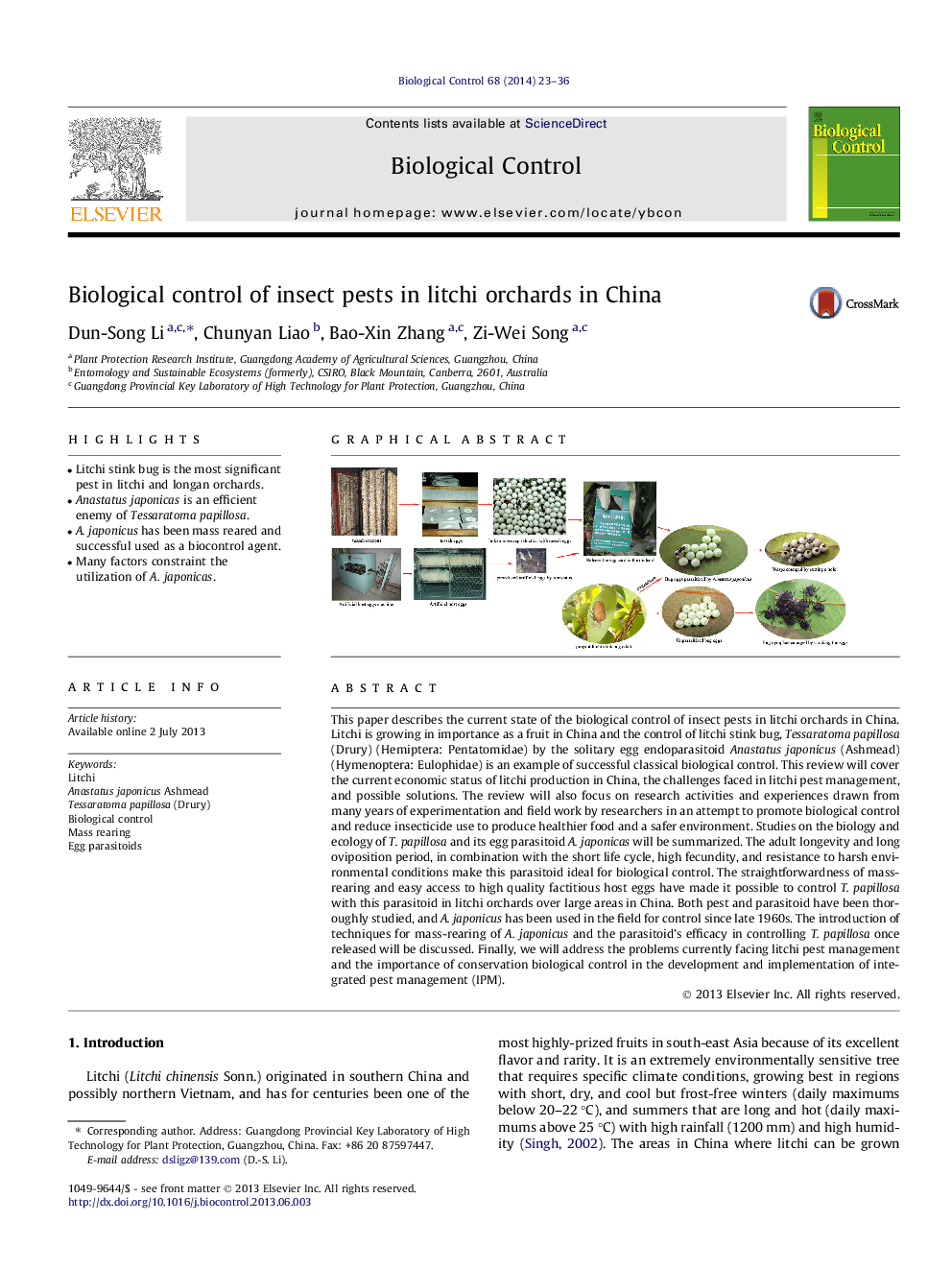| Article ID | Journal | Published Year | Pages | File Type |
|---|---|---|---|---|
| 4503959 | Biological Control | 2014 | 14 Pages |
•Litchi stink bug is the most significant pest in litchi and longan orchards.•Anastatus japonicas is an efficient enemy of Tessaratoma papillosa.•A. japonicus has been mass reared and successful used as a biocontrol agent.•Many factors constraint the utilization of A. japonicas.
This paper describes the current state of the biological control of insect pests in litchi orchards in China. Litchi is growing in importance as a fruit in China and the control of litchi stink bug, Tessaratoma papillosa (Drury) (Hemiptera: Pentatomidae) by the solitary egg endoparasitoid Anastatus japonicus (Ashmead) (Hymenoptera: Eulophidae) is an example of successful classical biological control. This review will cover the current economic status of litchi production in China, the challenges faced in litchi pest management, and possible solutions. The review will also focus on research activities and experiences drawn from many years of experimentation and field work by researchers in an attempt to promote biological control and reduce insecticide use to produce healthier food and a safer environment. Studies on the biology and ecology of T. papillosa and its egg parasitoid A. japonicas will be summarized. The adult longevity and long oviposition period, in combination with the short life cycle, high fecundity, and resistance to harsh environmental conditions make this parasitoid ideal for biological control. The straightforwardness of mass-rearing and easy access to high quality factitious host eggs have made it possible to control T. papillosa with this parasitoid in litchi orchards over large areas in China. Both pest and parasitoid have been thoroughly studied, and A. japonicus has been used in the field for control since late 1960s. The introduction of techniques for mass-rearing of A. japonicus and the parasitoid’s efficacy in controlling T. papillosa once released will be discussed. Finally, we will address the problems currently facing litchi pest management and the importance of conservation biological control in the development and implementation of integrated pest management (IPM).
Graphical abstractFigure optionsDownload full-size imageDownload as PowerPoint slide
